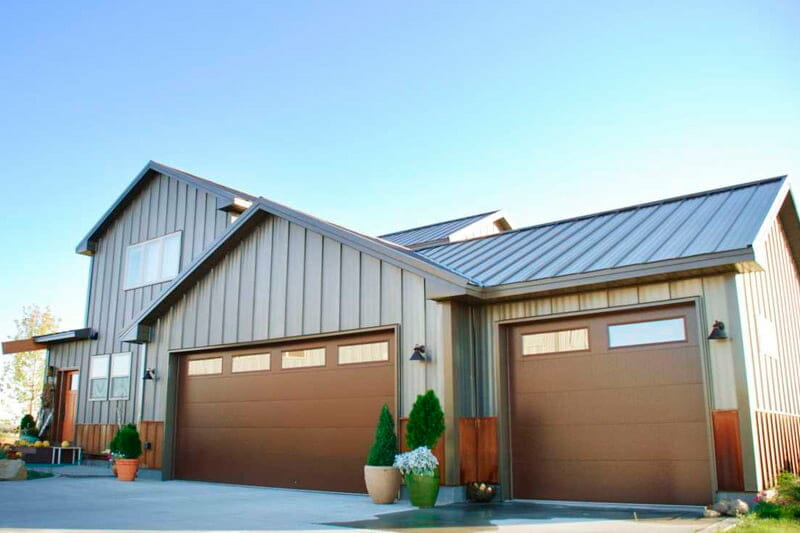
Before you decide about the siding material for your home, you should consider the maintenance requirements of steel and wood. These two materials require less maintenance and are not conducive to mold growth. They also withstand flying debris and fire. Moreover, steel is also recyclable, requires little maintenance, and is both fire and weather-resistant. Both materials require little maintenance, and you can check this website to learn more.
Table of Contents
Metal Siding
You might be wondering about the benefits of steel siding over hardwood. Regardless of your preference, both materials have their pros and cons. One crucial benefit of steel is its long-term durability and color retention. However, you should be aware that it can rust after prolonged exposure to the elements, even when treated with rust-resistant coatings. You should also consider the weather conditions in your area if you live in an area prone to fog and salt spray.
Another significant benefit of metal siding is its fire resistance. This quality can translate to lower homeowner insurance premiums. Aside from that, metal siding is much cheaper to buy and install. If you’re looking for an aesthetic look, steel may be the way to go. In addition to that, steel siding can last much longer than hardwood. Nonetheless, you must be sure to hire a certified contractor who will install the new siding correctly.
If you’re building a new house or are re-siding your current home, steel is an excellent option for exterior siding. However, steel is a perfect fit for residential exteriors.
Engineered Wood Siding
Among the various siding options available, steel is a popular choice. However, it is also more expensive than most other types of siding, especially premium steel. Steel costs about double as much as different kinds of siding, plus installation fees. However, many homeowners are comfortable with the higher initial cost because steel siding is durable and usually pays for itself over time.
While wood is an excellent option for a natural look, it is also susceptible to damage from insects and mold. If it isn’t adequately treated, it can peel, crack, and warp. It may also need to be repainted every five years or so. Wood siding can be costly to refinish, so you should consider the upkeep costs. Wood siding is an excellent option for a homeowner who is not averse to maintenance.

Stone Veneer
When it comes to exterior cladding, a stone veneer may be the right choice. This material can add a rustic and earthy look to your home. Often, it is used on lower levels of main floors, as driveway pillars and fireplace surrounds. Stone veneer is also available in sub-styles, such as weathered wood. The cost of stone veneer is higher than that of other siding materials, so it is essential to do your homework before choosing this type of material.
Fiber Cement Siding
An excellent place to start your research is by checking out fiber cement Siding (also known as composite wood) and hardwood Siding. These two materials are a great option to protect your house from the elements. However, it would help to keep in mind that fiber cement siding is more expensive than hardwood siding. That said, this material is durable and will last for many years. If you follow the steps to maintain it properly, it will last for many years.
Fiber cement siding is a newer type of siding made of sand, cellulose, and cement. It is cured with pressurized steam. It is one of the most durable siding options available, but its price is higher than hardwood and steel. Another advantage of hardwood is incredibly versatile and comes in a wide range of colors, styles, and textures. Depending on the wood used, you can customize the look of the exterior by staining it any color you like.
As far as durability goes, steel is the better choice. Steel is thicker and heavier than wood, making it less susceptible to extreme weather conditions and hail. It is also less likely to rot, warp, and have insect activity. If you want to get the most out of the siding you’ve installed, steel is better. A few pros and cons of each material should help you decide which one is best for your home.
